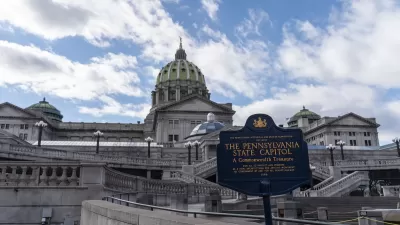Urban emissions researchers have been invited to speak at the UN Climate Conference in Lima. Their findings: through focused and networked monitoring, cities can make real inroads on cutting carbon.
This Friday, scientists from the Megacities Carbon Project at JPL and the Hestia Project at ASU will present at the ongoing UN Climate Conference in Lima. Both efforts use an array of measurement techniques to hone in on carbon emissions from cities: how much, when, and from which sources. Their spot at the UN conference demonstrates that organization's increased focus on what individual cities are doing to rein in carbon emissions.
While cities are often epicenters for carbon emissions, many have also emerged as leaders in sustainable policy implementation. This is despite national gridlock on environmental issues. The article by Rebecca Tuhus-Dubrow explains how the Hestia Project and the Megacities Carbon Project have identified city-specific areas where emissions could be curtailed. A major goal is to determine where municipal sustainability investments should be made for greatest overall effect.
Beyond action on the city level, the researchers want to "establish a global network of cities that can develop the methodology, share data and best practices, and ultimately form a framework for slashing emissions worldwide." A unified system advising cities on emissions practices faces some significant challenges, but the researchers believe such a network might be established within a decade.
FULL STORY: How Cities Can Track Down Their Climate Mistakes

Study: Maui’s Plan to Convert Vacation Rentals to Long-Term Housing Could Cause Nearly $1 Billion Economic Loss
The plan would reduce visitor accommodation by 25,% resulting in 1,900 jobs lost.

North Texas Transit Leaders Tout Benefits of TOD for Growing Region
At a summit focused on transit-oriented development, policymakers discussed how North Texas’ expanded light rail system can serve as a tool for economic growth.

Why Should We Subsidize Public Transportation?
Many public transit agencies face financial stress due to rising costs, declining fare revenue, and declining subsidies. Transit advocates must provide a strong business case for increasing public transit funding.

How to Make US Trains Faster
Changes to boarding platforms and a switch to electric trains could improve U.S. passenger rail service without the added cost of high-speed rail.

Columbia’s Revitalized ‘Loop’ Is a Hub for Local Entrepreneurs
A focus on small businesses is helping a commercial corridor in Columbia, Missouri thrive.

Invasive Insect Threatens Minnesota’s Ash Forests
The Emerald Ash Borer is a rapidly spreading invasive pest threatening Minnesota’s ash trees, and homeowners are encouraged to plant diverse replacement species, avoid moving ash firewood, and monitor for signs of infestation.
Urban Design for Planners 1: Software Tools
This six-course series explores essential urban design concepts using open source software and equips planners with the tools they need to participate fully in the urban design process.
Planning for Universal Design
Learn the tools for implementing Universal Design in planning regulations.
City of Santa Clarita
Ascent Environmental
Institute for Housing and Urban Development Studies (IHS)
City of Grandview
Harvard GSD Executive Education
Toledo-Lucas County Plan Commissions
Salt Lake City
NYU Wagner Graduate School of Public Service



























